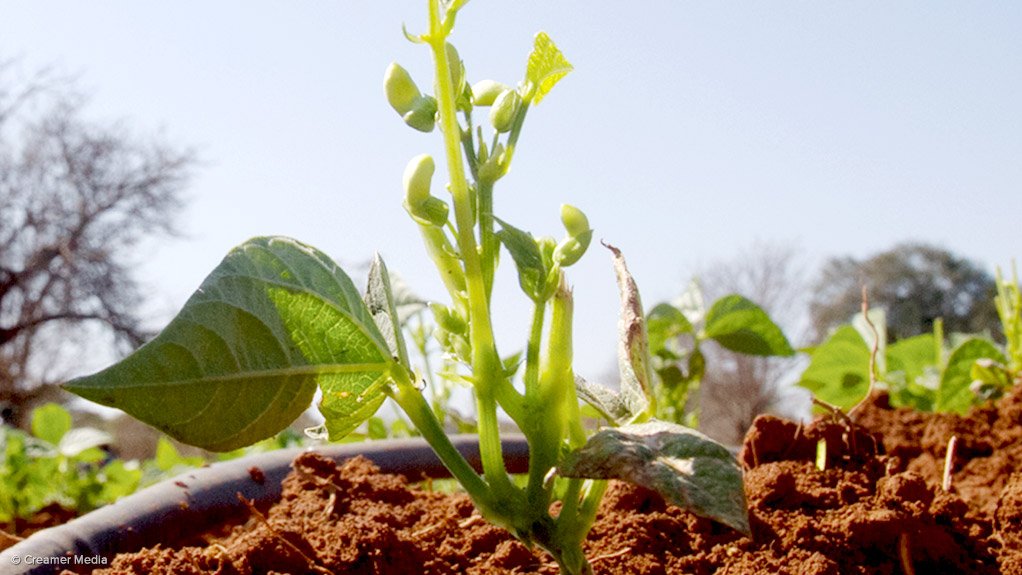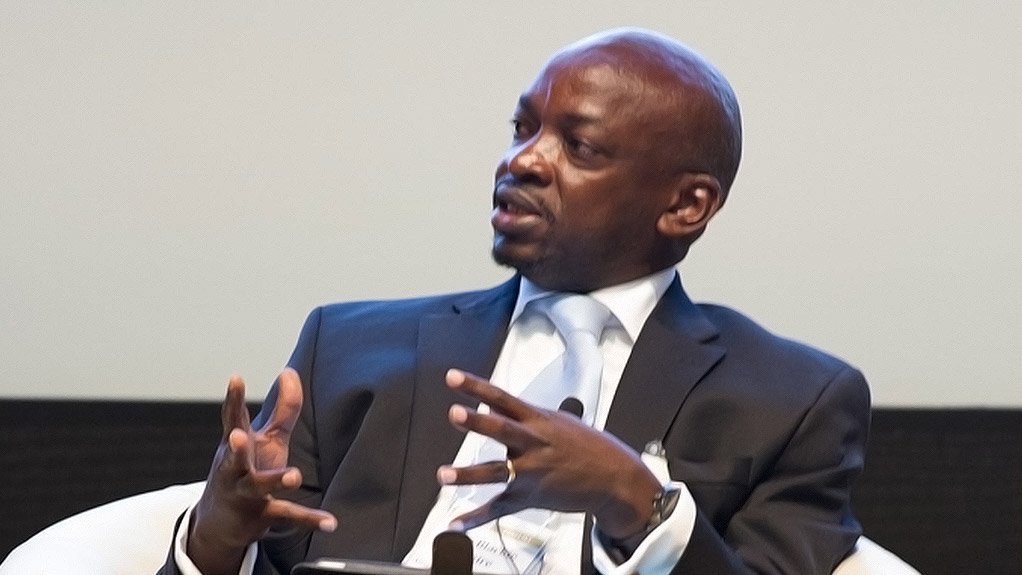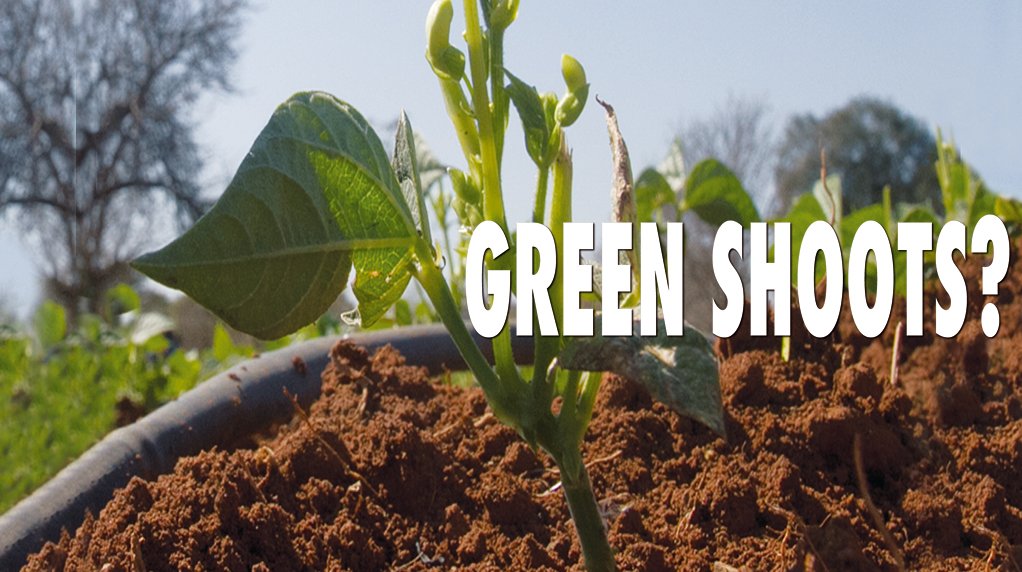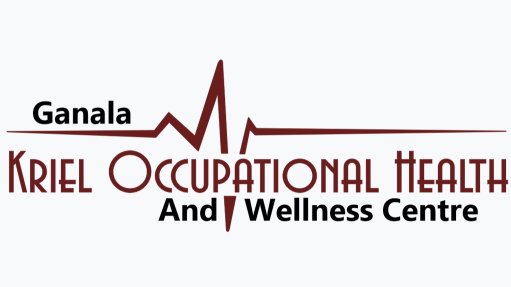By declaring 2014 the 'year of agriculture', the African Union hopes to spur a green revolution






THE YEAR OF AGRICULTURE The African Union hopes that by giving high-level focus to the issue it will encourage countries to increase food security, reduce poverty, promote economic growth and create wealth through agricultural upliftment
Photo by Duane Daws
BOAZ BLACKIE KEIZIRE The African Union is assessing several African countries with notable agricultural success and this will assist in defining key parameters that will result in the successful transformation of the agriculture sector
DAWIE MAREE Africa has the capacity to expand its agricultural production and become a net exporter of food if its soil, water and other resources are used
MAKHTAR DIOP Improved land governance will be vital for achieving rapid economic growth and translating it into significantly less poverty and more opportunity for Africans
Photo by Bloomberg
Despite some strides having been made over the past decade to enhance agricultural development across Africa, there is no escaping the reality that the continent continues to face serious challenges of hunger, malnutrition and rural poverty. This has prompted the African Union (AU) Assembly of African Heads of State and Governments to declare 2014 the Year of Agriculture and Food Security in Africa.
The AU hopes that by giving high-level focus to the issue, it will encourage countries to increase food security, reduce poverty, promote economic growth and create wealth through agricultural upliftment.
As part of its declaration, the AU will call on all member States to strengthen the policy environment in a bid to help spur national, regional and international investment in agriculture. It also aims to highlight policy and strategy implementation and track and measure progress.
The Year of Agriculture and Food Security in Africa is an attempt to secure a recommit- ment to agriculture and to implementing policies and strategies highlighted following the implementation of the AU’s Compre-hensive Africa Agriculture Development Programme (CAADP), developed and adopted in Mozambique by African heads of State and governments in 2003.
The aim of the CAADP is to ensure that poverty is reduced significantly in all rural and agriculture-dependent African com- munities and that all member States are free from hunger by 2025.
Since its implementation, the CAADP was launched in more than 40 African countries, with 34 committing to a common vision and strategy called the CAADP Compact; of these 34, 28 member States are moving towards establishing their own National Agriculture and Food Security Investment Plans.
Eleven countries have received funding from the Global Agriculture and Food Security Programme for the implementation of these plans.
Performance Assessment
AU department of rural economy and agriculture chief adviser and CAADP team leader Boaz Blackie Keizire states that the AU has led the process of assessing agriculture-sector performance since the CAADP was endorsed.
The CAADP was created to focus on sustainable land and water management, infrastructure for market access and enhanced agricultural trade, ensuring resilience and food and nutrition security, as well as on managing vulnerability to risks and putting in place agricultural technologies with mechanisms for innovation and their adoption.
“The lessons learnt and experiences gained in the last ten years of CAADP implement-ation helped us reach a common under-standing to build on the strong policies and strategies established in the last decade and to focus on implementation and impact. This will define a set of activities for 2014,” he says.
Further, to attract stakeholders to assess and declare results as part of the CAADP results framework, the AU has commissioned studies to understand what constitutes the drivers of success in agricultural transformation in Africa.
The AU is assessing several African countries with notable agricultural success and this will assist in defining key parameters that will result in the successful transformation of the agriculture sector.
Keizire notes that a change is needed in the original CAADP commitment, which targets the allocation of 10% of a country’s yearly national budget to agriculture and achieving a minimum of 6% yearly agricultural growth.
He says the AU will reassess the efficacy for the technical and political feasibility and investigate other factors that influence these targets.
Programme Priorities
Commercial farming body Agri SA senior economist Dawie Maree believes that the priorities of the CAADP should aim to increase production on available land using biotechnology and create an enabling environment for farmers to produce food and fibre by reducing the costs of doing business and investment in infrastructure.
“The programme should also create a trade-friendly environment through the harmonisation of rules and regulations, as well as through the effective use of information and communication technology and investment in trade infrastructure,” he states.
Keizire says it is important to note that the CAADP is a unique instrument that guides all continual efforts on agricultural development.
He notes that African countries, such as Rwanda, Ethiopia, Ghana, Burkina Faso and Sierra Leone, all of which have adopted the CAADP, have reported a significant reduction in food insecurity, owing to targeted programmes aligned to the programme’s priorities.
The Alliance for a Green Revolution in Africa (Agra) also welcomes the AU’s renewed commitment to the transformation of Africa’s agricultural sector, according to a state- ment it released in May.
“We share the AU’s vision for an Africa that is free of hunger, an Africa that boasts a strong agriculture sector, which provides food, labour and wealth for all groups of society. We are optimistic about Africa’s future, especially given the tremendous advances we are witnessing across the continent, in research laboratories, in the fields, in the marketplace and at policy level,” says Agra president Jane Karuku.
Agriculture Report Card
Keizire notes that African countries are growing rapidly and this offers a significant opportunity for modernising African agriculture.
He says that, from 2000 to 2010, Africa’s yearly total gross domestic product (GDP) increased on average by 4.8%, up from 2.1% from 1990 to 1999, with the yearly GDP of the agriculture sector having grown at 3.2%.
“In many countries, the high growth potential of export agriculture and its increasingly prominent part in agricultural strategies are important, but it is increasing the production of staple food, crops and livestock that will remain central to any growth strategy, since these have the needed scale and linkages to poor households to reduce mass poverty within a reasonable period,” he explains.
Further, based on a series of household surveys, the AU states that many African countries are more food secure, although there are some instances of hunger in different geographical areas, where food-surplus areas cannot deliver food to food-deficit areas, owing to market and infrastructure challenges.
Production- and productivity-related challenges, as well as environmental, institu- tional, policy-related and implementation challenges, also affect food security in Africa.
Maree believes that food security will be ensured if the market operates with fewer distortions in terms of rules and regulations that impair the market place. “The cost of doing business should be as low as possible. South African and African farmers have to compete with subsidised European Union and US farmers, without much assistance from their governments,” he states.
Keizire says that, despite positive agricultural performance in Africa over the last few years, productivity levels remain low. Cereal yields in Africa average only 1.2 t/ha, compared with more than 3 t/ha for Asia and Latin America and about 5.5 t/ha for the European Union.
He says agricultural performance indicates that the source of agricultural growth in Africa is mostly the result of cultivation rather than rising productivity. Cultivation-induced land expansion increased from 200-million hectares in the early 1990s to 250-million hectares in 2010, an increase of 25% in ten years – often at the expense of forests and pastures.
According to the World Bank, sub-Saharan Africa is home to nearly half of the world’s usable, uncultivated land; however, the continent has not been able to develop these unused tracts, estimated at more than 202- million hectares, to reduce poverty and boost development, jobs and shared prosperity.
Financing Gap
There is also a financing problem, which was highlighted at the African Green Revolution Forum (AGRF), held in Mozambique earlier this month. The global gap in finance for agriculture is $450-billion, but is felt more acutely in Africa than anywhere else.
The forum heard that only 10% of African smallholder farmers have access to the financing they need to expand their production and raise their income.
AGRF convener and international aid agency Oxfam Pan-Africa Programme director Irungu Houghton says that there are a number of successful partnerships between the private and public sectors and small-holder farmers, but that these partnerships are still too rare.
He believes that the transformation of Africa’s agriculture and the alleviation of food insecurity and poverty would be a reality if smallholders had the funds to boost their crop yields and expand their businesses.
National Association of Smallholder Farmers of Malawi CEO Dyborn Chibonga reports that African governments have gone some way towards addressing affordability and accessibility of production inputs, but notes that challenges still persist. “Each and every year, smallholder farmers are pulled into a downward spiral of taking out high-interest loans in order to buy farming inputs for the following season. Without access to credit, smallholders cannot raise productivity,” he states.
Over the coming year, the AGRF has committed to focusing on a number of priority actions. These include ensuring that rising revenues from extractives industries are invested into the development of agriculture, reducing corruption in public–private partnerships and designing business ventures that are transparent and environmentally and socially responsible
The AGRF also hopes to build the capacity of farmers associations, finance institutions and agribusiness agencies to work together and encourage governments to offer tax incentives and make preferential procurement choices for companies that source from smallholder farmers.
The development of inclusive financial models that combine incentives, reduce debt risk and promote longer-term agribusiness models and the combination of incentives, reducing debt risk and promoting longer-term agribusiness models, is also a focus for the next year.
Growth Spin-Offs
Keizire says that, despite positive economic growth rates, there is a concern that a number of countries in Africa are not on track to meet most of the United Nation’s 2015 Millennium Development Goals, parti- cularly the goal of eliminating extreme poverty and hunger.
Keizire states that Africa’s economic growth is occurring simultaneously with a declining per capita food production, which remains the continent’s structural paradox.
Africa’s self-reliance on food and nutritional security also remains a challenge, with imports for crops having increased from about 12% in 2000 to about 18% in 2010 and for meat from about 4% to 8% in the same period. Africa spends between $40-billion and $50-billion yearly on imported agricultural products, resulting in a loss of foreign exchange and jobs.
The continent’s interregional trade comprises about 7%, compared with Europe’s 40% and North America’s 60%, and a significant challenge that hinders progress in trade is the deficient state of infrastructure in Africa.
A report by the World Bank, ‘Africa Can Help Feed Africa’, highlights that a rise in global food prices and an ever-increasing food import bill have drawn attention to agri- cultural trade policies in Africa and it further states that the continent’s increasing demand for staple food will double by 2020.
Solutions for Africa
Keizire believes that the challenges facing the continent can be tackled if there is political will, emerging opportunities, inclusive growth and self-reliance. He notes that, in the last decade, political leaders in Africa have put in much more effort to improve agricultural development and food security.
But technical capacity and resources are key to ensure supply of food and a thriving agriculture in Africa. “Africa has to acquire cutting-edge technologies and produce enough products to negotiate and capture a growing proportion of lucrative global markets, enhance investment that increases the quantity and quality of jobs for its growing youthful population and leverage its natural resources and place a higher market value on them, in line with global markets and values.
“This is how other regions of the world have developed, relying on and leveraging their own natural and intellectual resources and drawing on organisational strengths and disciplines. This is the only viable way in which Africa will save and reposition itself to protect its interests and reap the most out of its resources,” he states.
Further, emerging opportunities will enhance Africa’s growth, which is needed, because its growing population will soon be larger than that of India, as well as China, as it is urbanising rapidly and its urban population is expected to increase by 50% by 2035.
Keizire says that, together with economic growth, the demand for global products – such as technology and investment – as well as the demand for Africa’s natural resources – such as land, water, minerals and forestry products – is also rising significantly.
He adds that Africa has great potential to produce agricultural commodities, not only to feed its own population but also to contribute towards feeding the world – if it can increase its production levels by 100-million tons of food a year, it will become a surplus region.
Maree agrees, adding that Africa has the capacity to expand its agricultural production, owing to the availability of soil, water and other resources, and that the continent can become a net exporter of food if these resources are used.
Enhancing opportunities for women and the youth will also ensure inclusive growth for the continent, as African women contri-bute significantly towards the labour used to produce food – not only for household consumption but also for sale. Their agricultural productivity must be improved and their participation in the value chain must increase, Keizire states.
World Bank Africa VP Makhtar Diop adds that, despite abundant land and mineral wealth, improved land governance will be vital for achieving rapid economic growth and translating it into significantly less poverty and more opportunity for Africans. “The status quo is unacceptable and must change so that all Africans can benefit from their land,” he avers.
In its report, ‘Securing Africa’s Land for Shared Prosperity’, the bank indicates that more than 90% of Africa’s rural land is undocumented, making it highly vulnerable to land grabbing and expropriation with poor compensation.
However, encouraging evidence from countries such as Ghana, Malawi, Mozambique, Tanzania and Uganda has led to an action plan that could help revolutionise agricultural production, end land grabbing and eradicate extreme poverty in Africa.
“The continent can realise the vast development promise of its land over the next decade by championing reforms and investments to document all communal lands and prime lands that are individually owned. The tenure rights of squatters on public land in urban slums, which are home to 60% of urban dwellers in Africa, need to be regularised.
“Weak governance and corruption also need to be addressed, as [they are] endemic to the land governance system in many African countries, where it often favours the status quo and harms the interests of the poor. African governments need to mobilise behind these land reforms and attract the political and financial buy-in of the international development community.”
World Bank director for sustainable development in Africa Jamal Saghir says that improving the performance and productivity of Africa’s agriculture sector is vital for broad-based growth, more jobs, investment and substantially less poverty, adding that land governance is a proven pathway towards achieving transformational change and impact, which will help secure Africa’s future.
The agriculture sector should also become attractive to the youth, as they are far more technologically advanced than most of those currently involved in farming and this will be an advantage to the sector, Keizire states.
Maree adds that, for Africa to have a thriving agriculture sector, governments need to take the initiative to change some of the current policies.
One such policy is the use of genetically modified foods, which a large number of African countries prohibit, but if the practice is not regulated, Africa will not be able to expand agriculture to the required capacity.
Further, intra-Africa trade is not reaching its potential to improve agriculture in Africa trade facilitation because of poor infrastructure and different rules and regulations between countries.
“Other policies that also need to be addressed include land ownership, as farmers have difficulty in obtaining finance without ownership. As a result, smallholder farmers will not be able to ensure food security on a national level in the long term,” Maree concludes.
Article Enquiry
Email Article
Save Article
Feedback
To advertise email advertising@creamermedia.co.za or click here
Comments
Press Office
Announcements
What's On
Subscribe to improve your user experience...
Option 1 (equivalent of R125 a month):
Receive a weekly copy of Creamer Media's Engineering News & Mining Weekly magazine
(print copy for those in South Africa and e-magazine for those outside of South Africa)
Receive daily email newsletters
Access to full search results
Access archive of magazine back copies
Access to Projects in Progress
Access to ONE Research Report of your choice in PDF format
Option 2 (equivalent of R375 a month):
All benefits from Option 1
PLUS
Access to Creamer Media's Research Channel Africa for ALL Research Reports, in PDF format, on various industrial and mining sectors
including Electricity; Water; Energy Transition; Hydrogen; Roads, Rail and Ports; Coal; Gold; Platinum; Battery Metals; etc.
Already a subscriber?
Forgotten your password?
Receive weekly copy of Creamer Media's Engineering News & Mining Weekly magazine (print copy for those in South Africa and e-magazine for those outside of South Africa)
➕
Recieve daily email newsletters
➕
Access to full search results
➕
Access archive of magazine back copies
➕
Access to Projects in Progress
➕
Access to ONE Research Report of your choice in PDF format
RESEARCH CHANNEL AFRICA
R4500 (equivalent of R375 a month)
SUBSCRIBEAll benefits from Option 1
➕
Access to Creamer Media's Research Channel Africa for ALL Research Reports on various industrial and mining sectors, in PDF format, including on:
Electricity
➕
Water
➕
Energy Transition
➕
Hydrogen
➕
Roads, Rail and Ports
➕
Coal
➕
Gold
➕
Platinum
➕
Battery Metals
➕
etc.
Receive all benefits from Option 1 or Option 2 delivered to numerous people at your company
➕
Multiple User names and Passwords for simultaneous log-ins
➕
Intranet integration access to all in your organisation



















